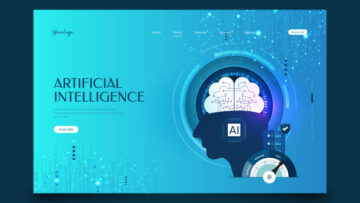For decades, chronic conditions such as heart disease and diabetes have been rising. The number one cause of disability and death in the U.S. is chronic conditions like heart disease.
It makes sense to identify people at risk of chronic diseases before they become sick. Early intervention can slow the progression of chronic diseases and improve patients’ quality of life. This could save millions of dollars on medical costs.
According to a RAND study, about 50% of employers sponsor wellness programs that offer employee incentives. These programs include gym discounts and a health risk assessment, usually lab tests that calculate each individual’s risk factors. Then, those at risk receive extra care and supervision.
Mohsen Bayati is an associate professor of Operations, Information, and Technology at Stanford Graduate School of Business. He says that the benefits expected don’t always manifest. According to several studies, such programs may cost companies more than they save. He says that one reason is that risk assessments are not very accurate.
Bayati says that if you incorrectly identify someone as being at high risk – a ‘false negative’ – you end up paying for services you don’t need. “If you miss someone at real risk – a false negative – you will still be hit with huge medical bills.”
He says that one solution would be conducting a more complex test panel. This would increase the cost. “Lab tests can be expensive. The companies do this for many employees, so they only look at a few biomarkers. The detection capability is also not very good.”
Bayati argues that the key to making preventive programs effective is improving the selection of biomarkers. How do you go about it? It is better to ask: How do you select a minimum set of markers to maximize diagnostic power across various diseases?
This is the puzzle Bayati has tackled with A recent paper. He co-authored it with two Stanford colleagues, Andrea Montanariopens in a New Window and Sonia Bhaskar (Ph.D.), a statistician and electrical engineering professor. They developed a machine-learning method using some jujitsu.
They found that when they tested the software on records of 75,000 patients, they could predict nine severe diseases in a group with surprising accuracy. Bayati admits that they were “surprised.” Comparing their assessment to a hypothetical Cadillac care assessment with no limit on biomarkers and cost less but still had almost the same predictive power, Bayati says.
There may be a lesson to learn in this age of Big Data. Bayati ponders, “You must wonder.” In every industry, businesses are investing in resources to collect more data. We put sensors on everything just because we can. And frankly, not all of it is necessary or even useful.
Too Much Information
In the past, health-risk assessment was designed by selecting the best markers of each disease and adding them individually to a list. Bayati notes that hospitals are becoming more sophisticated with their biomarker identification, using advanced statistics and AI. But it’s done one disease per time.
He says you could build a test panel in this manner but would need too many biomarkers. In practice, accuracy is compromised, and compromises are made. Bayati and his colleagues added a second stage to the analysis. “We said let’s begin with the complete list and then see if it can be simplified more effectively to minimize any loss of diagnostic ability.”
They used techniques from machine learning and high-dimensional statistics to achieve this. The fundamental question is: If you have too many pieces of information, how do you reduce them to a smaller, more helpful set? How can you reduce the size of the data?
The key to solving the “TMI” problem involves math, but the most important thing is optimizing your selection of biomarkers together. Decide how many biomarkers to use – the researchers chose 30 – and then optimize the predictive power of all combinations for the entire set of diseases.
The model is effective because biomarkers can indicate more than one type of disease. For example, high blood glucose may indicate diabetes and kidney, liver, or heart disease. Alkaline phosphatase levels that are abnormally high can be associated with cancer, heart disease, and liver disease. Bayati says that you are throwing away valuable information if you don’t consider these overlaps in your selection process.
No limit to objectives
It is possible to achieve multiple goals simultaneously using the method Bayati, his colleagues, and others have described. Which is more critical for health risk assessments, accuracy or cost? Of course, both. Do we want Alzheimer’s disease or arterial diseases to be predicted? Yes.
Bayati states that there is no limit on the number of goals. You could optimize 20, 30, 100 plans. You can then narrow down your required information, because adding new objectives will not require more data.
It’s essential for the healthcare system if it can help fulfill the promises of corporate wellness programs. This approach can be used in various public and business policy operations. Bayati says that it’s essential to have clear objectives. Computers can perform the analysis, but humans must tell them what to optimize.
He believes that companies often skip this step. Sometimes, it appears that companies just try to collect data and then ask questions later. More information doesn’t always mean better. It’s important to know what to look for. “Our paper is a first step in this direction.”




